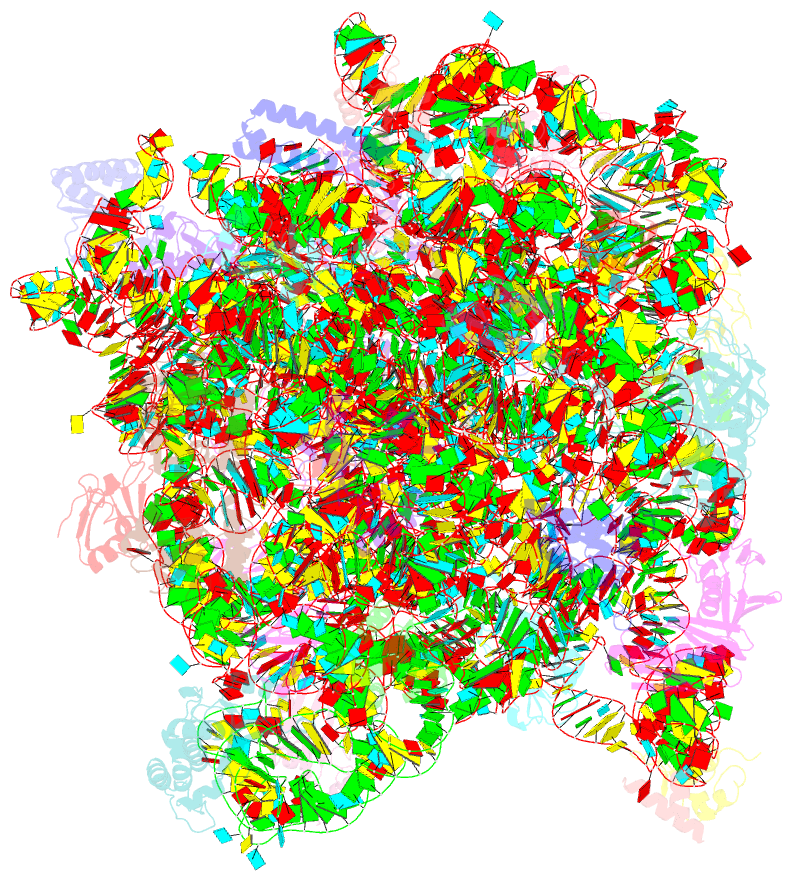Summary information and primary citation
- PDB-id
- 3g6e; SNAP-derived features in text and JSON formats;
DNAproDB
- Class
- ribosome
- Method
- X-ray (2.7 Å)
- Summary
- Co-crystal structure of homoharringtonine bound to the large ribosomal subunit
- Reference
- Gurel G, Blaha G, Moore PB, Steitz TA (2009): "U2504 determines the species specificity of the A-site cleft antibiotics: the structures of tiamulin, homoharringtonine, and bruceantin bound to the ribosome." J.Mol.Biol., 389, 146-156. doi: 10.1016/j.jmb.2009.04.005.
- Abstract
- Structures have been obtained for the complexes that tiamulin, homoharringtonine, and bruceantin form with the large ribosomal subunit of Haloarcula marismortui at resolutions ranging from 2.65 to 3.2 A. They show that all these inhibitors block protein synthesis by competing with the amino acid side chains of incoming aminoacyl-tRNAs for binding in the A-site cleft in the peptidyl-transferase center, which is universally conserved. In addition, these structures support the hypothesis that the species specificity exhibited by the A-site cleft inhibitors is determined by the interactions they make, or fail to make, with a single nucleotide, U2504 (Escherichia coli). In the ribosome, the position of U2504 is controlled by its interactions with neighboring nucleotides, whose identities vary among kingdoms.





